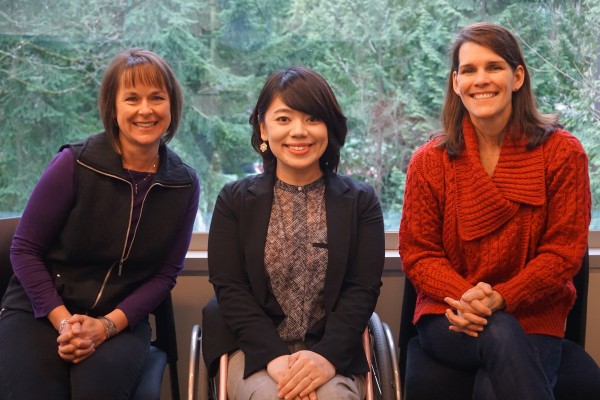This article is also available in: 日本語
In part 1 of visiting Microsoft, I have shared new pilot program for hiring people with autism at Microsoft.
In part 2, I focus more on how Microsoft creates inclusive work environment.

Teresa McDade, a director of Work & Life Benefits, manages a program that provides accommodations for all employees and applicants with medical needs or disabilities.
Teresa’s team of Benefit Business Partners works closely with employees, managers, HR managers, medical providers, and staffing partners, so that Microsoft can offer the best suitable accommodations for each person.
In US, disclosure of individual disability is optional during hiring process or after the employment.
Even if your disability is visually recognizable, you do not need to disclose the situation if you feel uncomfortable.
At Microsoft, if an employee decides to disclose disability upfront upon hire, Teresa and her team will work directly with the person for necessary accommodations.
Some employees might want to disclose their disability and request accommodations after they are hired.
Some other employees may become temporarily disabled due to such as broken bones or other medical conditions.
Employees do not need to consult with their managers for accommodations.
They can directly go to their HR manager who would direct them to their Benefit Business Partner for assistance.
Teresa’s team would work with all of those case.
Her team’s goal is to enable employees to do the essential function at their jobs.
Most accommodations are managed through a centralized budget, so that each business department does not have to worry about the budget.
Those procedures make it easier for people, who need accommodations, to request them more easily.
It also makes them feel less pressured to ask for accommodation and be able to maximize abilities of employee at workplace.
The remarkable topic about inclusive working environment is a variety of Employee Resource Groups (ERG) at Microsoft.
ERGs are run by employees on a volunteer basis.
In Cross Disability Employee Resource Group, which focus on raise awareness for people with disabilities, there are twelve different Employee-networks for different situations such as hearing loss, blindness, visual impairments, ADD (Attention Deficit Disorder), mobility disabilities, and dyslexia.
Microsoft is such a huge company but you might be the only deaf employee in the building.
You still make connections with an ERG of your interest, and you can find a number of different ways to expand your abilities at both work and private lives.

What made me interested was “Ability Summit”, an annual event.
A hackathon takes a big part of the event, and anyone can join the event to share ideas and thoughts, and actually solving the challenges right then.
One of the projects came from hackathon was creating an alterable navigation system for people with sight impairments.
A small team started from prototype and the collaborative team of the engineers at the floor of Ability Summit took it around and built a product that can be installed on the phone.
It is almost like a seeing eye dog that can talk to you and warn you saying like “You are coming up to stairs… You are coming up bumpy sidewalk…”
Moreover, Microsoft utilizes knowledge and information of employee community through programs like ERG and other employee networks, and reflect the input into better accommodations and create more meaningful programs with better understanding of the inclusive work environment.
“Unconscious Bias Program” is one of training programs where anyone can learn how unconscious bias influences to individuals behavior and potentially limit understandings of people around you.
The training teach some tips to realize where those bias may exist, and how you can try remove those barriers. The program is available public at:
https://www.mslearning.microsoft.com/course/72169/launch
Through the interview with Nicole and Teresa, I found that Microsoft have implemented various kinds of systems, programs, and trainings to create equal opportunities and to promote inclusive work environment.
Microsoft can develop new solutions for people in different situations around the world because Microsoft holds numerous experts of “differences.”
Sometime people view a difference as a negative aspect and we might feel secured to be as same as the majority is.
But it would be really hard for a group of people with same thoughts and background to create new innovations that change people’s lives.
The diversity and inclusion are important elements of Microsoft culture, which they see that as really valuable and beneficial part for the company to make meaningful impact people’s lives.
I hope more people and companies find the true value of diversity and utilize the differences.
In that way, we together can resolve existing issues and make the world a better place.
